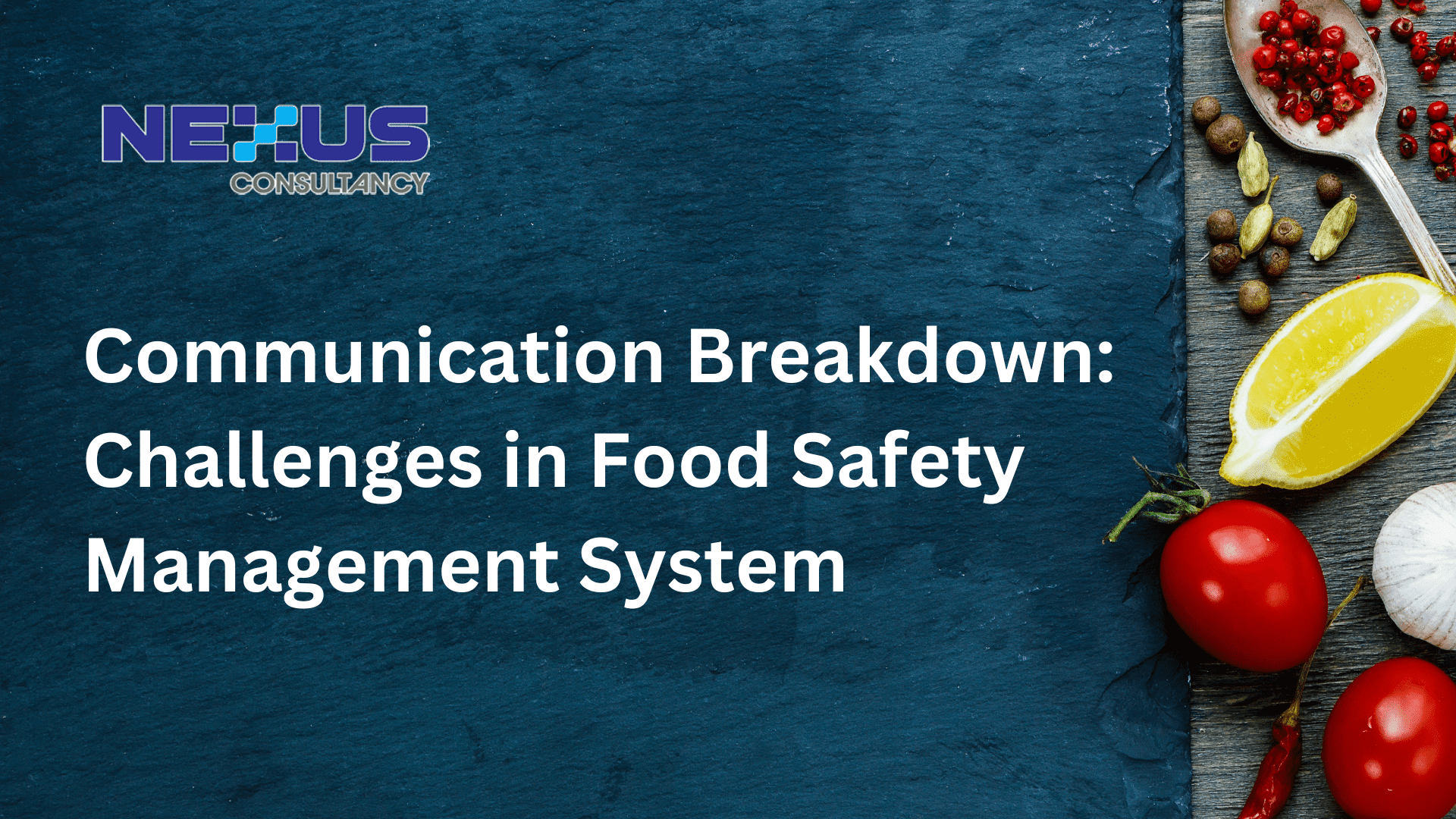
Danielle Tan
Chief Operating Officer
Leaders play a crucial role in setting the tone and supporting communication efforts throughout the organization, ensuring that food safety remains a top priority.

Ineffective communication can have serious consequences in the realm of food safety management. The food industry is highly regulated, with strict standards and regulations in place to ensure the safety and quality of food products. Communication plays a critical role in meeting these standards and maintaining a strong food safety management system. However, when communication is lacking or ineffective, it can lead to misunderstandings, misinterpretations, and mistakes that can compromise food safety, damage brand reputation, and even pose health risks to consumers. In this context, it is essential to identify and address the key challenges and issues related to ineffective communication in food safety management systems.
The four key challenges related to ineffective communication in food safety management systems in include:

#1. Vague and Unclear Communication
The current communication approach within food safety management systems may lack effectiveness due to the reliance on generic messages or instructions, such as posting generic messages on notice boards or simply telling people what to do. This can result in misinterpretation, confusion, and potential gaps in understanding.
Leaders need to establish a clear context by defining the mission, food safety policy, and objectives that align with the company’s overall goals. Messages should be specific and easy to understand, using language that is familiar to everyone involved. Additionally, the lack of specific details, such as deadlines, can further contribute to confusion and misinterpretation. Therefore, there is a need to improve the specificity and clarity of communication within food safety management systems to avoid misunderstandings and ensure that all stakeholders have a clear understanding of expectations and requirements.

#2. Inadequate Tools
The lack of a structured communication model, such as a “What/Who/Where/When/How” approach, may hinder effective communication. The absence of a clear focus on the basis of information, stakeholders involved, appropriate communication channels, deadlines, and implementation strategies may lead to confusion, delays, and inefficiencies in communication. As a result, there is a need to improve the utilization of communication tools in food safety management systems to ensure that the right approach is followed and that all necessary elements are considered for effective communication.

#3. Insufficient Follow-up Process
Lack of clear expectations and timely follow-up on progress may result in projects going off track and potential gaps or misunderstandings remaining unresolved. There may be a need for repeated follow-ups to ensure effective communication, but this may not be happening consistently. As a result, there is a need to improve the follow-up process in food safety management communication to ensure that messages are received, understood, and addressed promptly to avoid any potential disruptions or delays in food safety efforts.

#4. Lack of the Right People
The current team responsible for communication in the food safety management system may lack the necessary capabilities for successful communication. There may be a lack of leadership in appointing someone who can effectively lead the communication team, understand the company’s food safety commitment, and motivate employees. Additionally, there may be a lack of fresh perspectives from new team members and external partners, resulting in limited access to new tactics, methods, and technologies that could align with the company’s food safety direction and goals. As a result, communication efforts may not be well-coordinated and executed effectively, leading to potential gaps in information sharing and collaboration within the food safety management system.
Having the right people in place is essential for successful communication in a food safety management system. Leaders should appoint someone who can lead the communication team, understand the company’s food safety commitment, and motivate employees. Fresh perspectives from new team members and external partners can bring in new tactics, methods, and technologies to align with the company’s food safety direction and goals. A capable team of people ensures that communication efforts are well-coordinated and executed effectively.
Conclusion
In conclusion, an effective communication strategy is essential within a food safety management system to encourage interaction and information flow at all levels of the organization. Clear and specific messages, the right tools, a follow-up process, and a capable team of people are key elements in cultivating effective communication for food safety performance and growth. Leaders play a crucial role in setting the tone and supporting communication efforts throughout the organization, ensuring that food safety remains a top priority.






